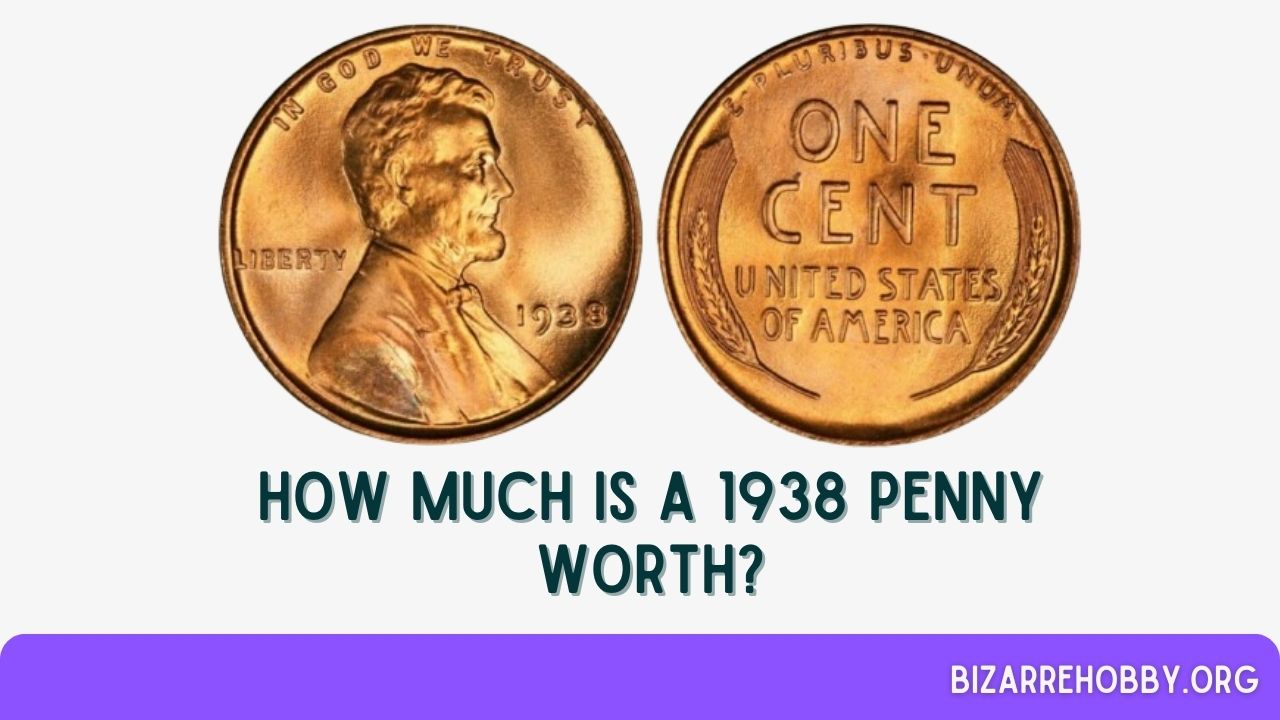Have you stumbled upon a 1938 penny in your pocket change? If so, you might be curious about its history, design, and, most importantly, its value.
Don’t worry, we’ve got all the information you need! We’ll dive into the 1938 penny’s value and the factors that influence it. Plus, we’ll explore the fascinating background of this coin.
Ready to dive in? Let’s go!
Table of Contents
Value Chart for 1938 Penny
| Mint mark | MS60 | MS63 | MS65 | MS68 |
|---|---|---|---|---|
| 1938 No Mint Mark Penny Value* | $7 | $12 | $32 | $14,250 |
| 1938 D Penny Value* | $6 | $12 | $24 | $11,500 |
| 1938 S Penny Value* | $8 | $15 | $30 | $15,000 |
| PR60 | PR63 | PR65 | PR67 | |
| 1938 No Mint Mark Proof Penny Value | Brown: $20 Red and brown: $37 Red: $50 Cameo: NA | Brown: $65 Red and brown: $90 Red: $110 Cameo: $260 | Brown: $135 Red and brown: $150 Red: $215 Cameo: $950 | Brown: NA Red and brown: $1,300 Red: $1,500 Cameo: 14,500 |
Historical Significance of the 1938 Penny
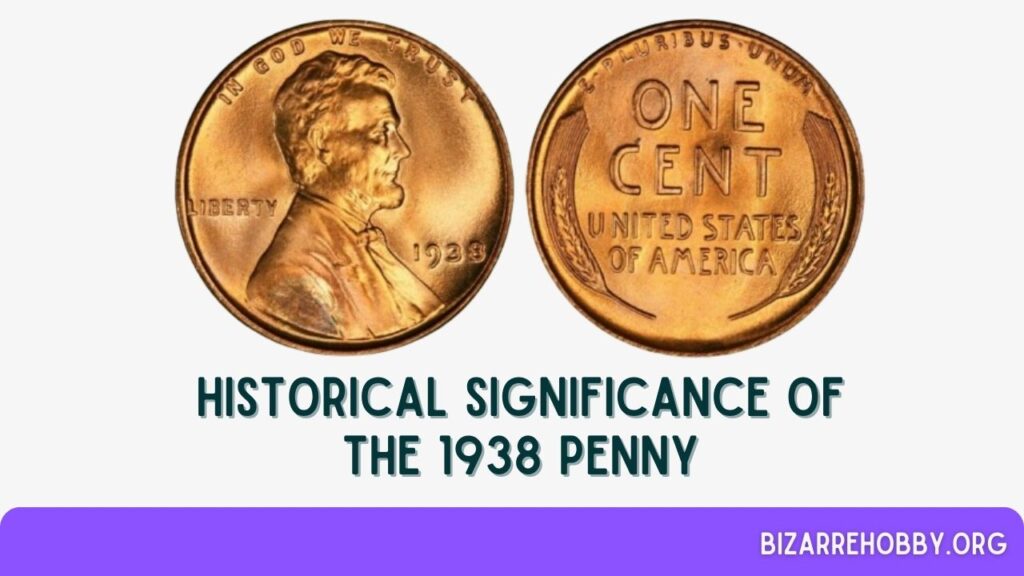
At first glance, the 1938 penny looks quite similar to modern pennies. The obverse features the familiar portrait of Abraham Lincoln, a design that continues to be used on today’s pennies.
This portrait is why these coins are commonly known as Lincoln penny. You might also hear them referred to as Wheat pennies, thanks to the design on the reverse.
The first Lincoln pennies were minted in 1909, making Lincoln’s portrait the longest-running design on any U.S. coin.
These coins marked a significant moment in numismatic history: it was the first time a real person appeared on a U.S. coin. Before this, the association with monarchy made it seem inappropriate, and Lady Liberty typically graced the “heads” side.
However, 1909 marked the centennial of Lincoln’s birth. As preparations for the celebration gained momentum, the idea of honoring the president with a coin became popular.
The U.S. Mint commissioned artist Victor David Brenner to design the new coins. He began the project in January 1909, and the first coins were issued in July of the same year.
If you examine the obverse of the 1938 penny, you’ll notice Brenner’s initials at the base of Lincoln’s portrait. Initially, these initials were on the reverse of the coin.
Upon their release, there was an uproar over the size and prominence of the initials. Critics felt that Brenner was using the coins to advertise himself, leading to a temporary halt in production.
With time running short, the Mint decided it would take too long to redesign the coins with smaller initials. Instead, they removed the initials altogether, despite Brenner’s protests. The initials were eventually reinstated in 1918, this time on the obverse.
In 1938, business strike pennies—those intended for circulation—were produced at the Mint facilities in Philadelphia, Denver, and San Francisco. That same year, the Philadelphia Mint also struck a smaller number of proof pennies, aimed at collectors.
Design of the 1938 Penny
The 1938 penny is a fascinating coin with several distinctive features that make it a favorite among collectors. Let’s explore its design elements and other characteristics in detail.
Obverse Design of 1938 Penny

The obverse of the 1938 penny showcases a profile portrait of Abraham Lincoln, similar to the one seen on modern cents. Lincoln is depicted facing right, with a lively expression that artist Victor David Brenner imagined as Lincoln reading to a child. Brenner likely based this portrait on a photograph of Lincoln with his son, taken by Matthew Brady.
Above Lincoln’s head, the words “IN GOD WE TRUST” are inscribed, while “LIBERTY” appears to the left of the portrait. The date is positioned on the right-hand side of the coin. If your penny has a mint mark, it will be located beneath the date: “D” for Denver, “S” for San Francisco, and no letter for Philadelphia.
Reverse Design of 1938 Penny
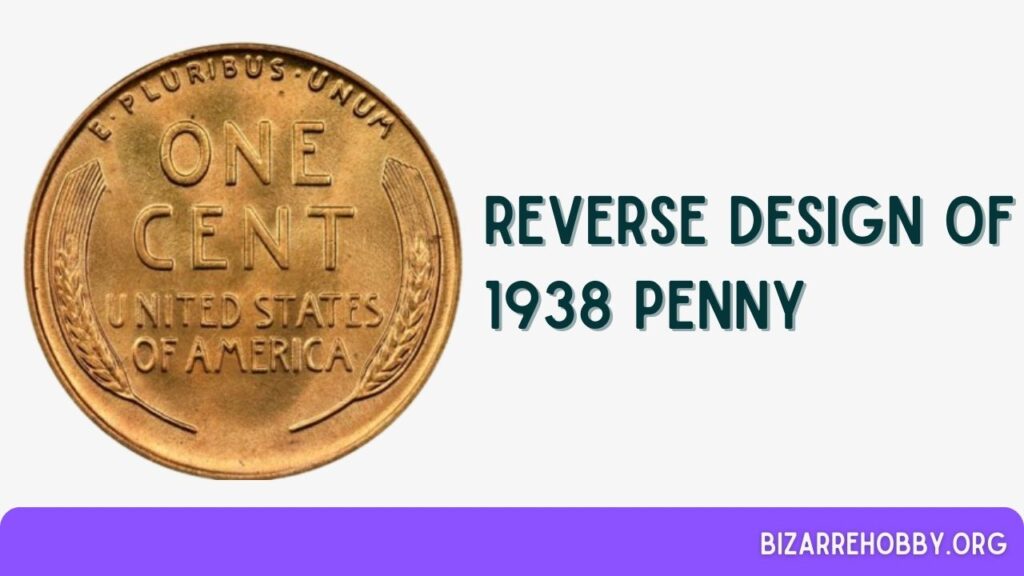
The reverse of the 1938 penny features two ears of durum wheat curving along the left and right edges, framing the denomination and the country name. At the top, the motto “E PLURIBUS UNUM” is inscribed, which means “From the many, one,” symbolizing the union of states.
Victor David Brenner also designed the reverse. Initially, he proposed a tree branch as the central motif, but it was deemed too similar to contemporary French coins.
Technical Specifications of 1938 Penny
The 1938 penny is composed of 95% copper, with the remaining 5% being a mix of tin and zinc. It weighs 3.11 grams and has a diameter of 19 millimeters. The high copper content causes the color of the coin to vary from red to brown over time due to handling and exposure to air. Consequently, finding a red coin in circulated condition is rare.
Collectors generally value red coins more highly than brown ones. Coin grading agencies use strict criteria to assess coin color: a coin must be at least 95% red to be graded as such. If it shows red over 5% to 95% of its surface, it is classified as “red and brown.” Coins with less than 5% red are considered “brown.”
Grading Guide for 1938 Penny
Grading your 1938 penny is crucial to determining its exact value. Here’s a quick reference guide to the different grades based on Sheldon Scale:
| Sheldon Scale | Grade |
|---|---|
| 1 | Basal State-1 |
| 2 | Fair |
| 3 | Very Fair |
| 4, 5, 6 | Good |
| 7, 8, 10 | Very Good |
| 12, 15 | Fine |
| 20, 30 | Very Fine |
| 40 | Extremely Fine |
| 50 | About Uncirculated |
| 60 | Mint State |
| 65 | Mint State |
| 70 | Mint State |
For a detailed understanding of your 1938 penny grade, please refer to our comprehensive Lincoln Wheat Penny Grading Guide. This step is essential to accurately assess the value of your 1938 penny.
1938 Penny Value Guides
Understanding the value of a 1938 penny involves considering various factors, including its condition, mint mark, and any unique errors. Let’s break down the value of these coins based on their mint marks and conditions.
1938 No Mint Mark Penny Value
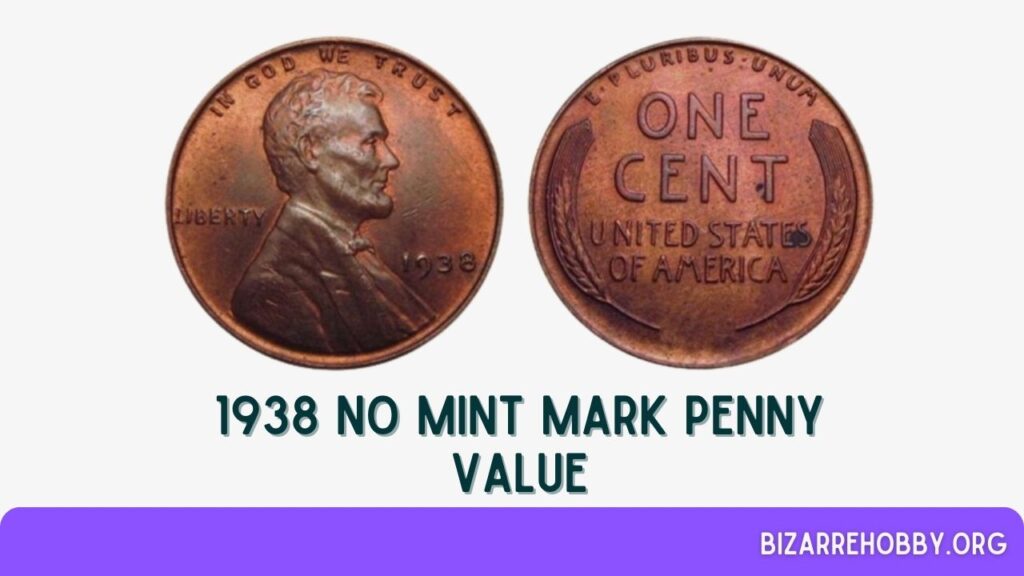
In 1938, nearly 157 million pennies were minted in Philadelphia. Today, the Professional Coin Grading Service (PCGS) estimates that around 15 million of these coins still exist.
For circulated coins, the value is typically just a few cents unless they feature notable mint errors. However, uncirculated coins (graded MS60 and above) can be significantly more valuable, especially those with a red coloration.
- MS60 Red: Approximately $7
- MS63 Red: Around $12
- MS65 Red: About $32
- MS66 Red: $40
- MS66+ Red: $80
- MS67 Red: $175
- MS67+ Red: $900
Only two coins have been graded higher than MS67+, both at MS68 Red, valued at $14,250 each.
1938 D Penny Value

The Denver Mint produced just over 20 million pennies in 1938, with an estimated 2 million surviving today. Interestingly, there are more high-quality survivors from Denver compared to Philadelphia.
- MS60 Red: Around $6
- MS65 Red: Approximately $24
- MS68 Red: $11,500 (three coins certified at this level)
Circulated coins from Denver are generally worth only a few cents unless they have mint errors.
1938 S Penny Value
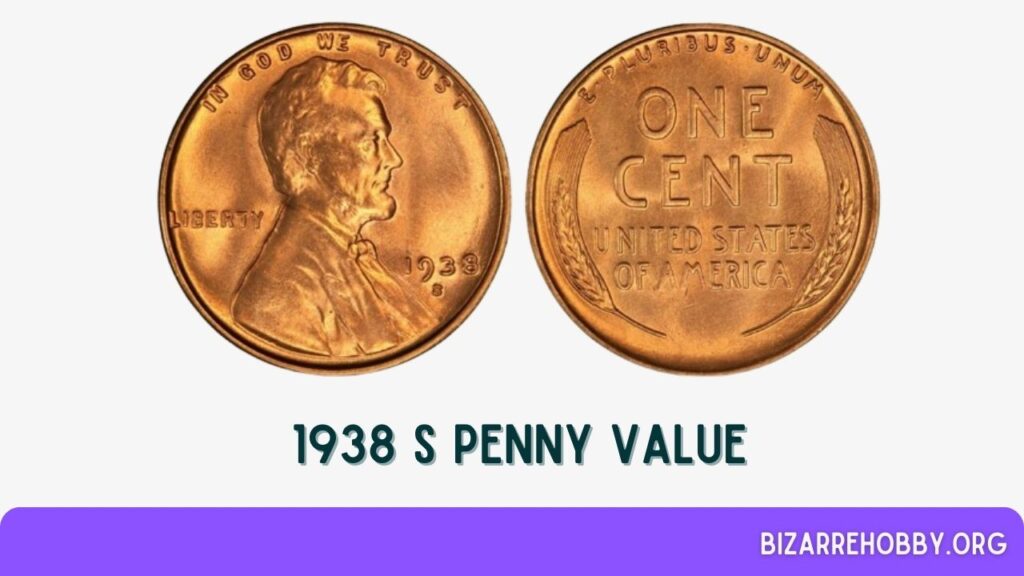
The San Francisco Mint struck about 15 million pennies in 1938, with around 16,000 surviving in mint condition. Despite the higher number of mint state survivors, no exceptional examples have been found.
- MS60 Red: Around $8
- MS63 Red: Approximately $15
- MS65 Red: About $30
- MS67+ Red: $1,000 (57 coins certified at this level)
Circulated 1938 S pennies usually hold minimal value beyond their face value.
1938 No Mint Mark Proof Penny Value
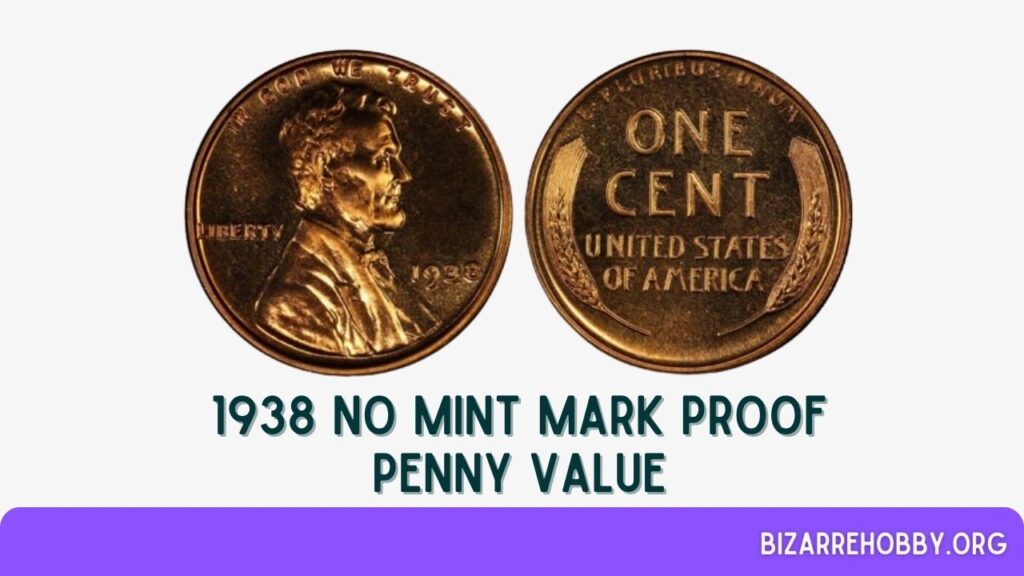
Proof coins are specially minted for collectors using carefully prepared dies and planchets. In 1938, the Philadelphia Mint produced 14,734 proof pennies, making them highly desirable.
- MS60 Brown: Around $20
- MS65 Brown: Approximately $135
For red and brown coins, values start at around $37 and can reach up to $1,300 at MS67.
Red examples are particularly valuable, with prices ranging from $50 at MS60 to an impressive $4,150 at MS67+.
The most sought-after are proof coins designated as cameos, known for their stunning mirrored finish and frosted designs. The 1938 proof penny mintage includes cameos graded from MS63 to MS67+.
At the lower end of this scale, you can expect to pay about $260. However, the highest quality cameos, valued by the PCGS, can fetch an astonishing $27,500 each.
Rare 1938 Penny Error List
The 1938 penny is notable for several rare mint errors that can significantly enhance its value. Among the most sought-after are the re-punched mint marks, such as the 1938 S/S/S and 1938 D/D varieties.
1938 S/S/S Penny, Re-punched Mint Mark Error

Some 1938 pennies minted in San Francisco feature a mint mark that was punched three times. If you look closely, you can see the shadows of the earlier “S” marks beneath the final one. This error is challenging to spot without a microscope or loupe.
Additionally, there is another repunched “S” mint mark error among the 1938-S pennies, featuring two “S” marks. It’s essential to identify which error you have.
The value of a 1938 penny with the triple “S” mint mark depends on its condition. A brown coin graded AU58 (about uncirculated) sold for $100 at auction in 2020. The PCGS has certified six coins at the highest known grade of MS67 red, each valued at $650.
1938 D/D Penny, Re-punched Mint Marks Error
Re-punched mint marks are not exclusive to the San Francisco mint. Some 1938 pennies from Denver also have double mint marks, one beneath the other.
As with other coins, the condition significantly affects the value. A brown penny with this error graded AU50 sold for $112 on eBay in 2018. Currently, the PCGS values a red coin graded MS60 at $70, rising to $150 at MS65 and $750 at MS66+.
Where to Sell Your 1938 penny?
Now that you know the value of your 1938 pennies, you might be wondering where to sell them online. Here’s a list of recommended sites, along with their pros and cons, to help you make an informed decision.
What to look out for in 1938 Penny?
When examining a 1938 penny, there are several key features and potential errors to keep an eye out for:
- Mint Marks: Check for the mint mark under the date. A “D” indicates Denver, an “S” signifies San Francisco, and no mark means it was minted in Philadelphia. Re-punched mint marks, such as the 1938 S/S/S or 1938 D/D, can significantly increase the coin’s value.
- Color: The color of the penny can affect its value. Red pennies are more desirable than brown ones. Look for coins that retain their original red color, as these are often worth more.
- Condition: The overall condition or grade of the penny is crucial. Coins in mint state (MS) condition are more valuable. Use a magnifying glass or loupe to check for wear and tear.
- Proof Coins: Proof pennies, especially those with a cameo finish, are highly sought after. These coins have a mirrored background with frosted designs and were struck for collectors.
- Errors: Look for any mint errors, such as double dies, off-center strikes, or other anomalies. These errors can make a coin much more valuable.
FAQs on 1938 Penny coin value
How much is a 1938 penny worth?
The value of a 1938 penny depends on its condition, color, and mint mark. Brown coins in poorer condition are usually worth only a few cents, unless they have interesting mint errors. For example, a brown “about uncirculated” coin with a triple S re-punched mint mark is worth around $100. The highest prices are achieved by top-quality coins, with the finest known 1938 S pennies graded MS67+ red valued at $27,500 each.
What makes a 1938 penny rare?
The rarity of a 1938 penny is influenced by its condition and color. Coins in better condition and with more red coloration are more desirable. Mint errors also add to a coin’s rarity. The 1938 D/D and 1938 S/S pennies are more valuable due to their re-punched mint marks, with the 1938 S/S/S penny being even rarer.
Final Thoughts
The 1938 penny is a fascinating piece of numismatic history with various factors influencing its value. Whether you’re a seasoned collector or a curious beginner, understanding what to look for can help you identify valuable coins. Pay attention to mint marks, color, condition, and potential errors to make the most of your collection.
